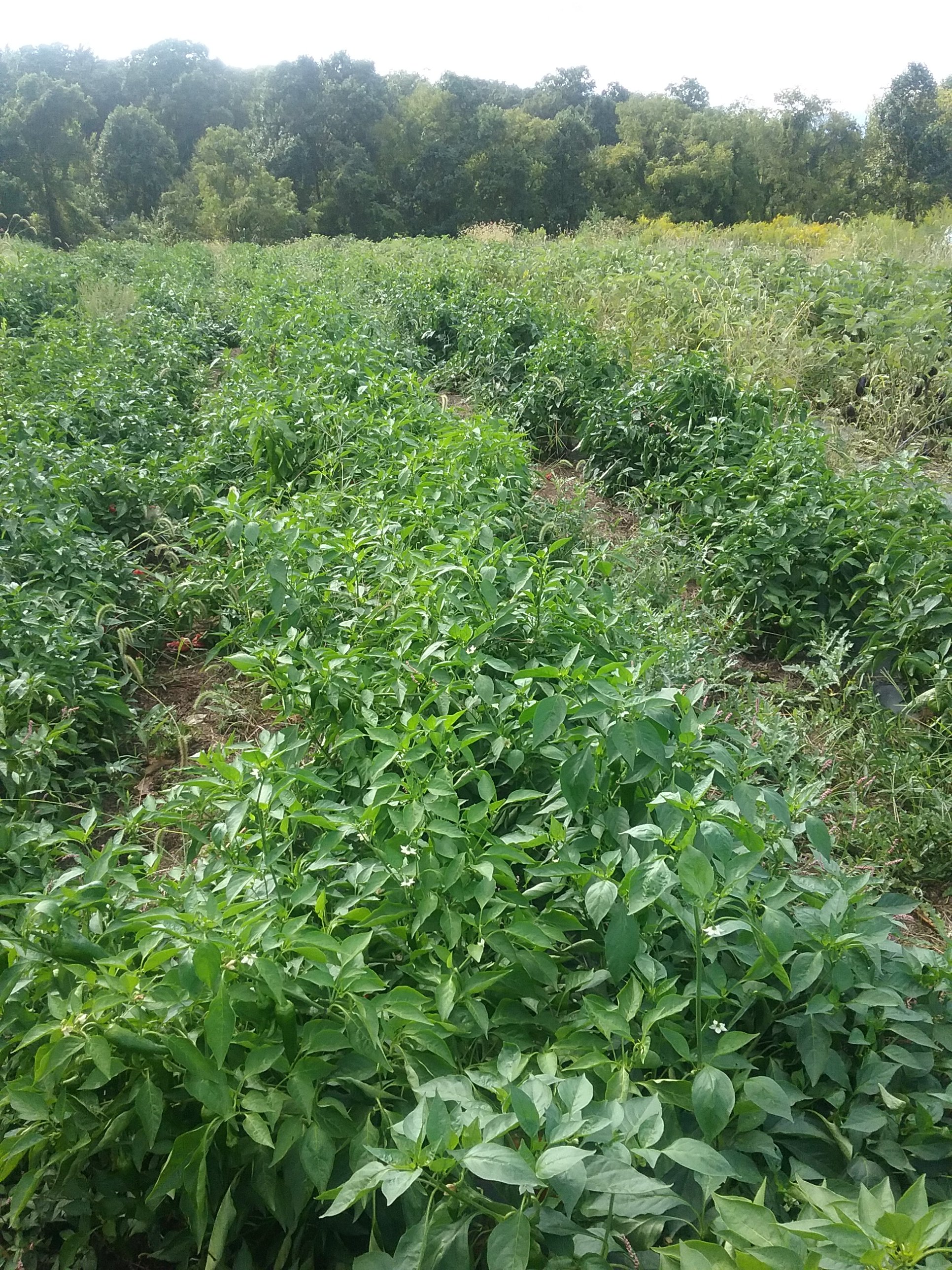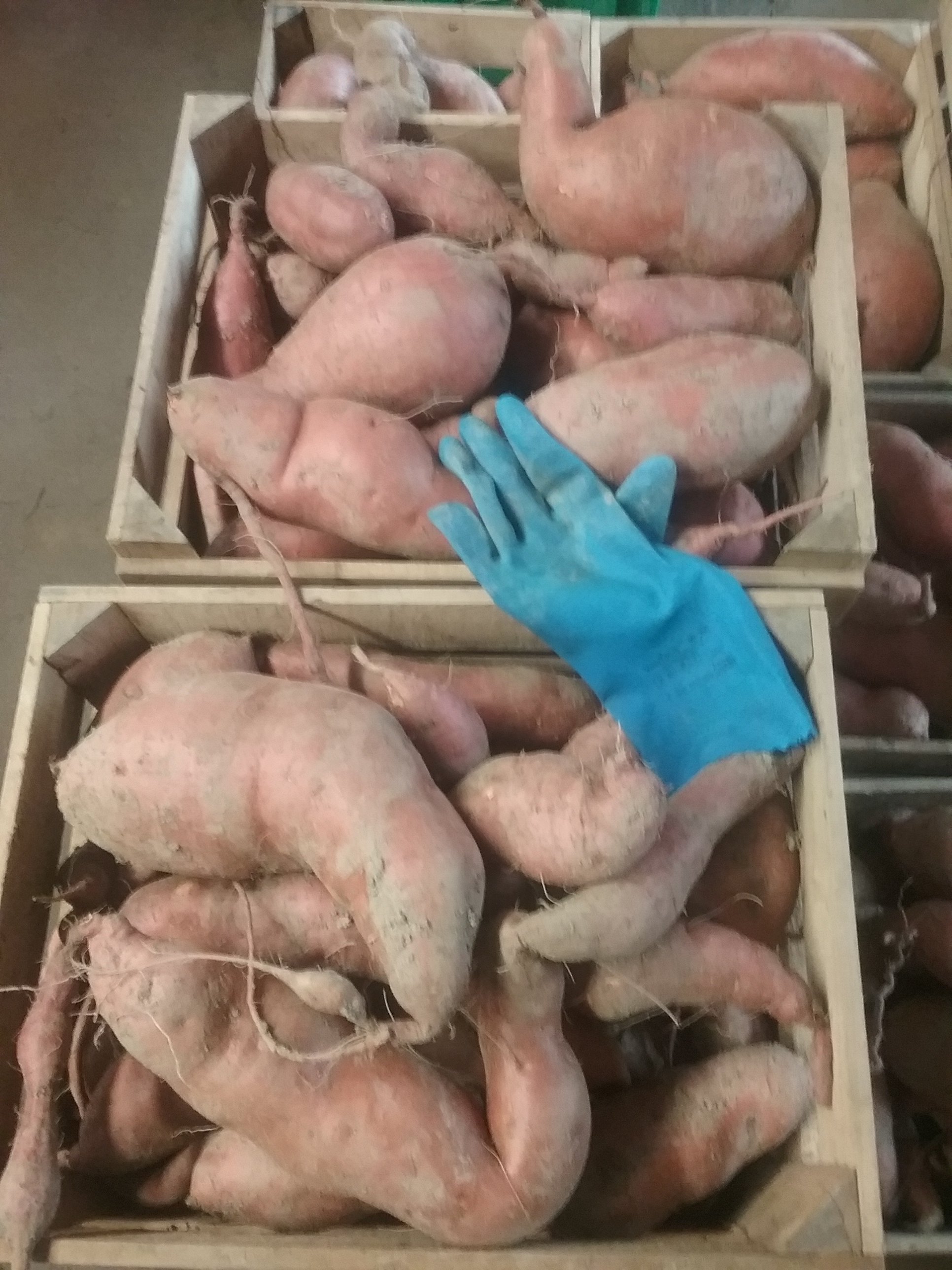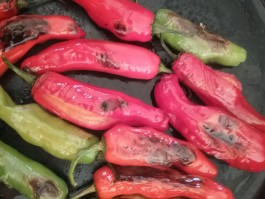Good Morning!
Someone pointed out to me recently that many of the nuances of some of the more unusual vegetables we grow may be unfamiliar to most people outside the small ghetto of vegetable farmers and produce afficianados. Probably true. So, I thought I would take a few moments to share with you my experiences with a few of the less common things we grow.
The first is shishito peppers. The result of Japanese breeding efforts, this thin walled pepper is ideal for frying (thick walled peppers, especially bell peppers, tend to have too much moisture for this and everything ends up being soggy). They range from no heat at all to a hint to fairly warm, though none that I have eaten have had me racing to the fridge for a mouthful of youghurt. As you can see from the photo at the top, there is no need to do anything to the peppers prior to cooking except to wash them. The peppers are done when they are soft and look like the ones pictured. they are eaten with the seeds-- just pick them up by the stem and eat the rest. My new favorite pepper. The red version is sweeter than the green with an undertone of ripe cherries.
Next is broccolini. 
Broccolini means "little broccoli" in Italian although it is actually a cross of broccoli and Chinese budding kale (gailan). The flavor is closer to broccoli, though. The nice thing about broccolini is that since the stem is snapped, not cut, it is always tender and there is no need to peel. The leaves also have a mild flavor (due to the kale parentage, I imagine) and so the entire thing is edible.
Piracicaba sprouting broccoli, unlike broccolini, is an actual broccoli, not a cross.
However, it has been bred not for a large central flower, but for a small central flower and many, many side shoots. Unless I harvest it incorrectly, these stems are also tender and won't require peeling. I find the flavor to be better than traditional broccoli, although the yields are less and this hasn't been a good year for broccoli in general (more on that later).
Broccoli Raab, on the other hand, isn't a broccoli at all, but rather a king of flowering turnip.
The buds are small-- this Italian delicacy is grown as much for its leaves as its flowers. I recommend cutting off and discarding the bottom inch of stem. The flavor of broccoli raab (aka broccoli rabe or rapini) is nothing like broccoli, and if that's what you are after, you will be very disappointed. The flavor is turnipy and bitter, which I know doesn't sound too appealing but I ask you-- what do sixty million Italians know that we don't?
Next week maybe I'll delve into the mysteries of tat soi, senposai, Hakurei salad turnips, escarole and sugarloaf chicory, but for now, I just want to alert you that, while April, May, June, July and August were challenging months for growing produce, September has been a rain drenched, sodden disaster. One man I know, a highly successful and accomplished farmer who has been growing organic produce since the mid 1970's, recently confided to a mutual friend that this is the worst year he's ever had. Many crops we can usually supply in abundance this time of year, like lettuce and spinach, have mostly rotted, and others, like broccoli and kale, have grown slowly and poorly. So my apologies for the somewhat sparse offering this week. Next week we expect the fall carrots to be ready to harvest, in addition to sweet potatoes and winter squash. Luckily, despite the setbacks this year has brought (I haven't even mentioned the extensive property damage we experienced during the July floods), my spirits remain high as I bring to mind the unofficial motto of farmers everywhere-- just wait 'til next year!
John




